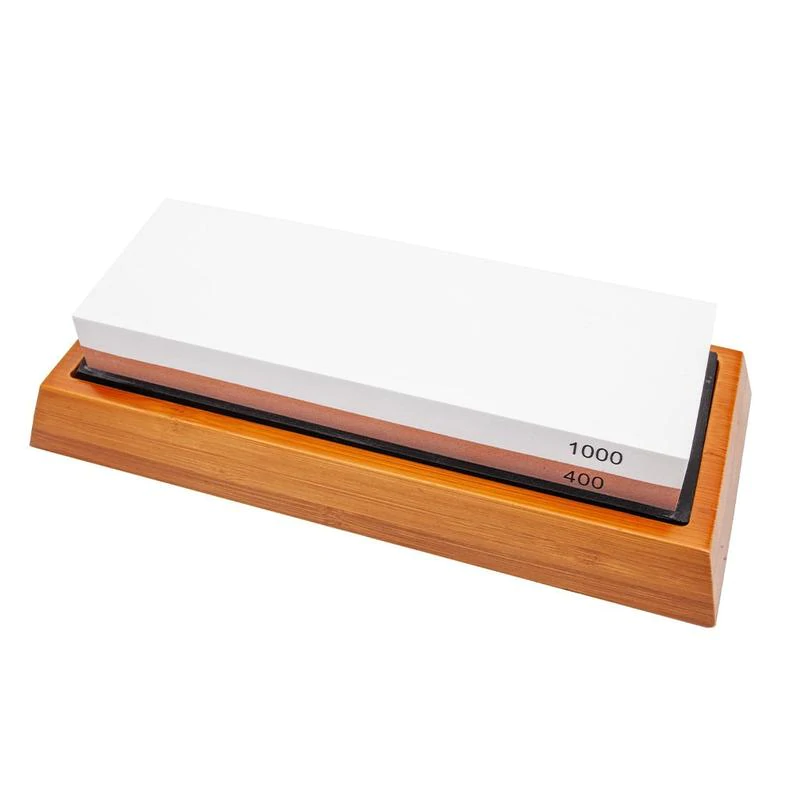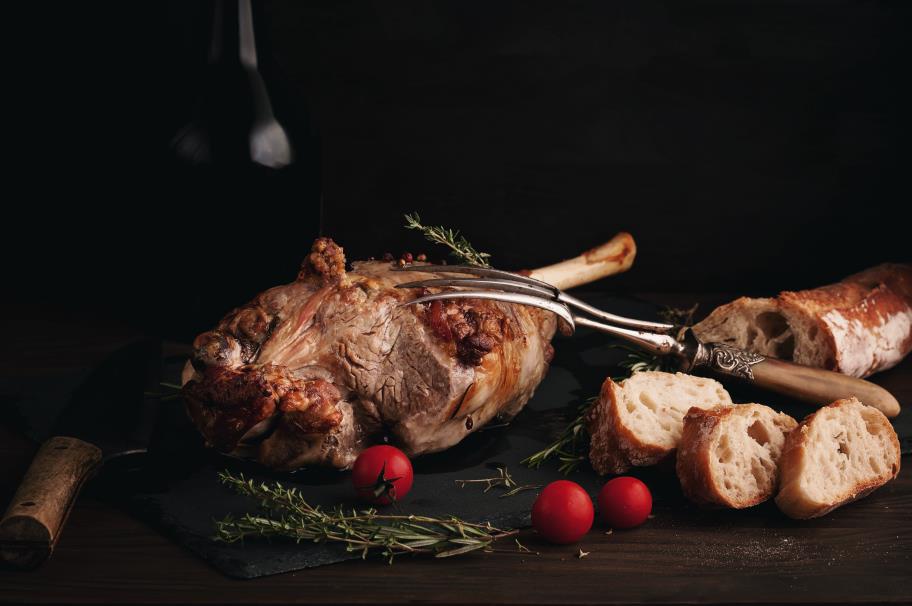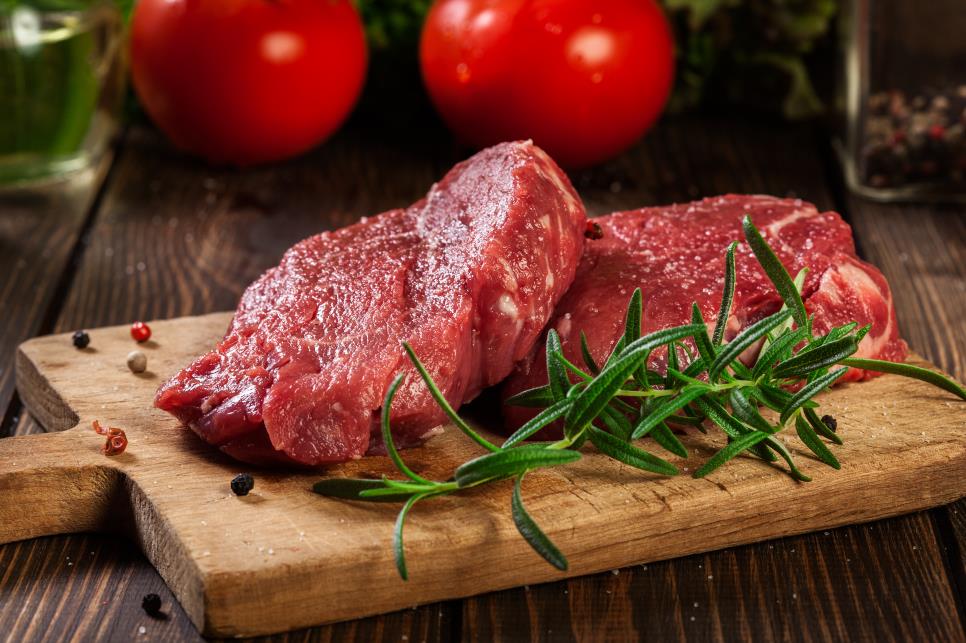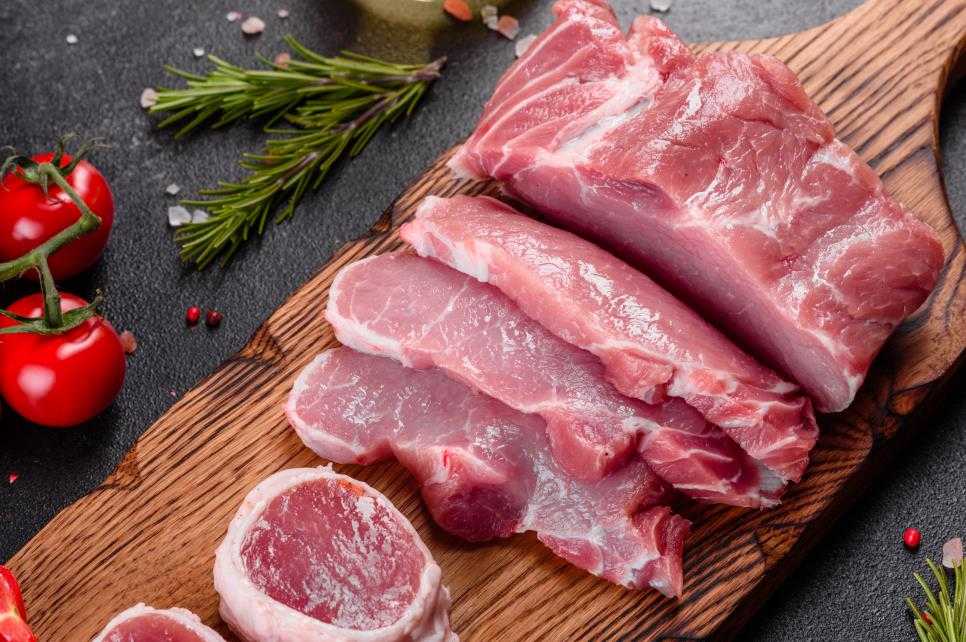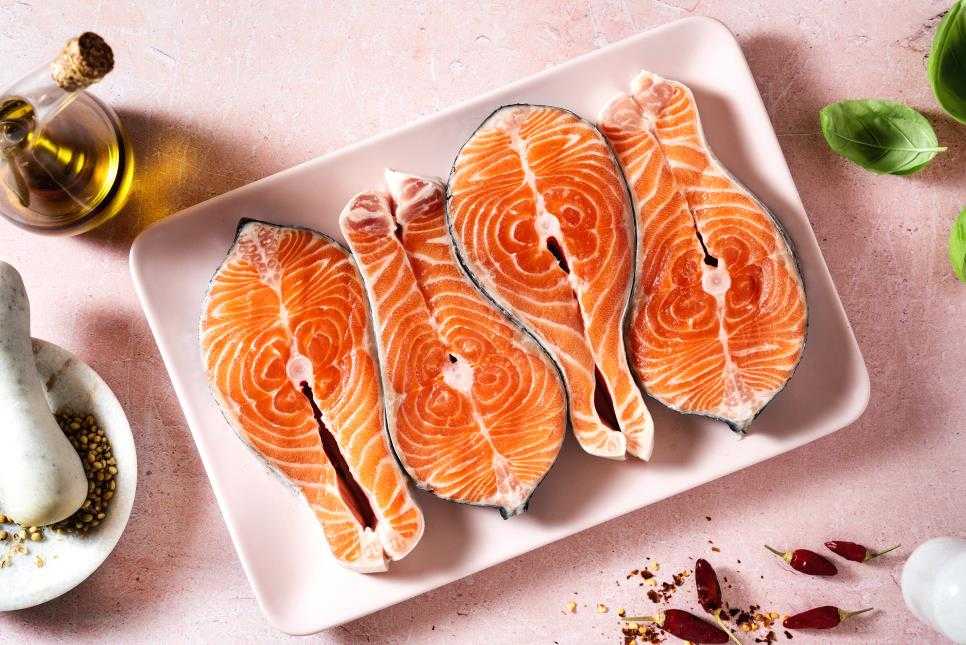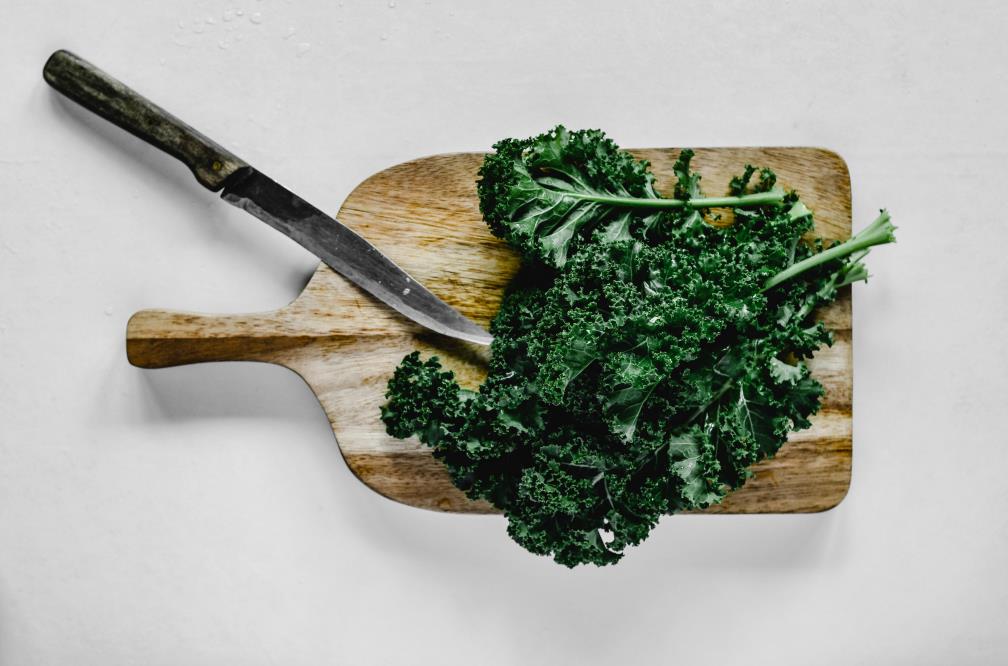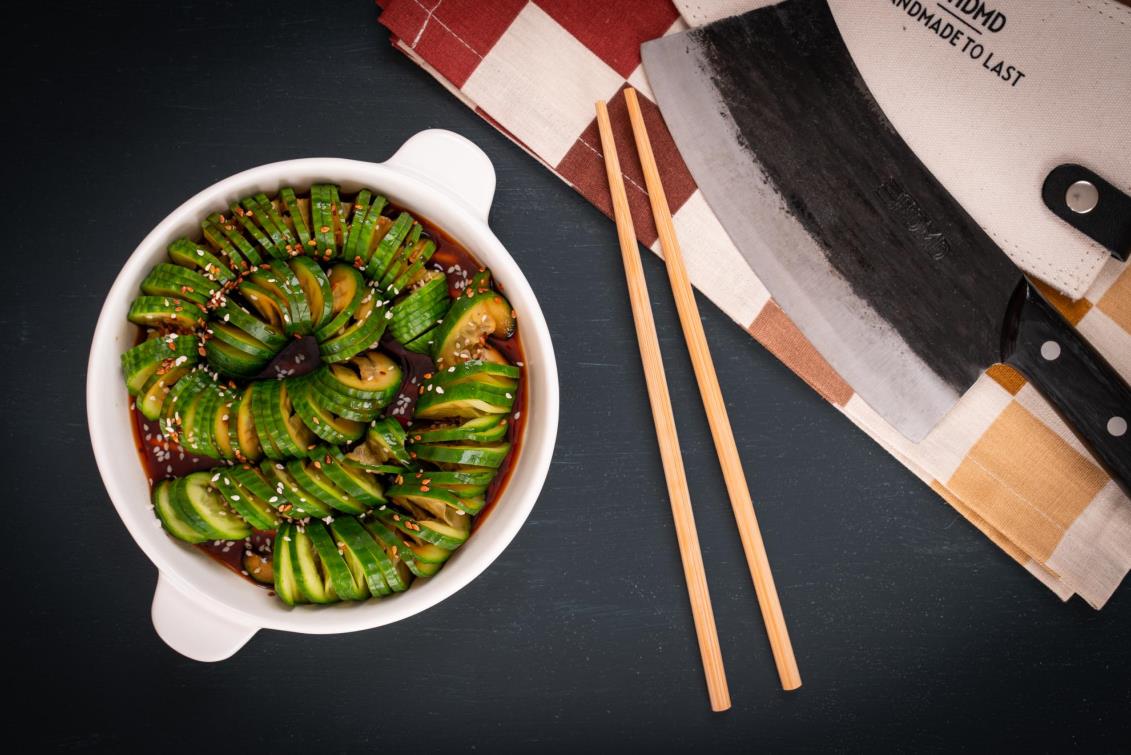As a new kitchen knife owner, you have many skills to learn. In particular, you must know how to prepare dishes with your knife. Yet, before you make a single cut, you should learn how to keep it in good condition. Important aspects of knife care include proper cleaning, safe storage, and of course, sharpening.
To maintain a knife, you can use a honing rod regularly. This will not sharpen the blade but keep it straight. To actually sharpen the blade, you need to slide the knife edge along a whetstone or use a sharpener.
To keep your kitchen knife sharp, do not store it with other cutlery; you must place it in its own case or on a magnetic knife rack. Avoid putting your knife in a dishwasher because the water pressure could move it around and blunt the blade. Instead, wash your knives by hand. Also, if your cutting board material is too hard, your knife will blunt faster.
This topic sounds simple, but there are lots of details to consider when keeping knives sharp. This article will look at the main methods for maintaining a sharp blade and explain why they are so important.
Table of contents
What are the dangers of a dull knife?
Logic tells you that a sharp knife is more dangerous than a dull knife. If it accidentally cuts you, it will do more damage. In reality, all knives can be dangerous if they strike you. If you take care when using a sharp knife, it will cut through most foods with ease. The blade will sink into ingredients without much effort, so it is unlikely to slip.
When a blade is dull, you have to push down with greater force for it to slice through ingredients. If the blade slips off the food’s surface, it could hit your free hand or other body parts at high speed and cause a serious injury.
Furthermore, if you know that your knife is not the sharpest, you may not worry about the damage it could cause. You might prepare your meals casually without paying much attention to your knife’s motion. If you take your eyes off the knife for even a second, you could unintentionally cut your fingers. Even a relatively blunt knife can open severe wounds.
Use your kitchen knife in the correct way
Use it for the right purpose
There are many styles of kitchen knives, each designed for specific applications. Some are versatile and effective for many jobs. A chef knife, for instance, can chop vegetables, de-bone meat, cut cakes, and slice cheese.
With certain varieties, you need to take more care. Using a paring knife to cut through tough pieces of meat or chop bones is risky and could crack the blade. Bread can be very hard, so a serrated bread knife is the best tool to pierce the surface. If you try to slice bread with any other type of knife, it could wear out very fast.
To keep your knife collection in top condition and avoid constant sharpening or repairs, understand which knife is useful for different tasks.
Cut on the right surfaces
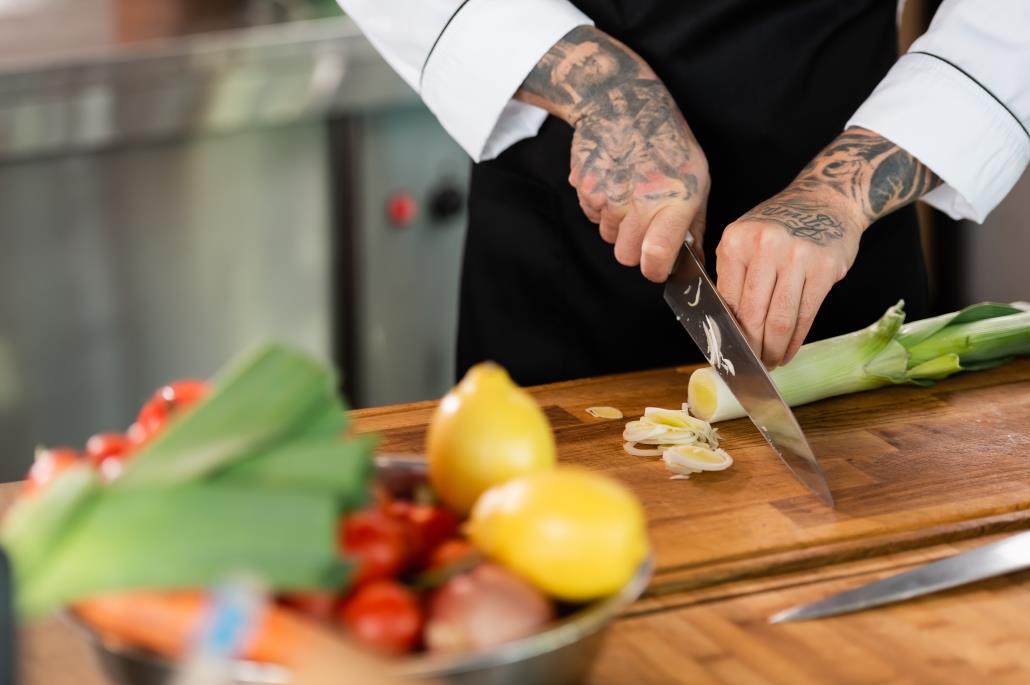
Aside from being strong, knife blades can be hard, especially when made from high-carbon steel. Yet, there are harder materials. If your cutting surface is harder than your knife, you could blunt it through repeated use.
If your chopping board is made from a very hard material like granite, ceramic, or certain metals, it might damage your blade’s edge every time it strikes the board. To be safe, you should opt for a cutting surface with a softer material. Plastic is a common choice since it is waterproof, smooth, and therefore easy to clean.
Wood is the other option for a chopping board. Wood has a porous surface that can allow bacteria to grow, though some species of wood are antibacterial. Thankfully, a wooden cutting board can also be sealed to keep out moisture and bacteria.
Both wooden and plastic cutting surfaces are softer than your knife blade, so will help to keep it sharp.
Handpicked for you
Get 11% off and free shipping – limited time only!
Hone your knife regularly
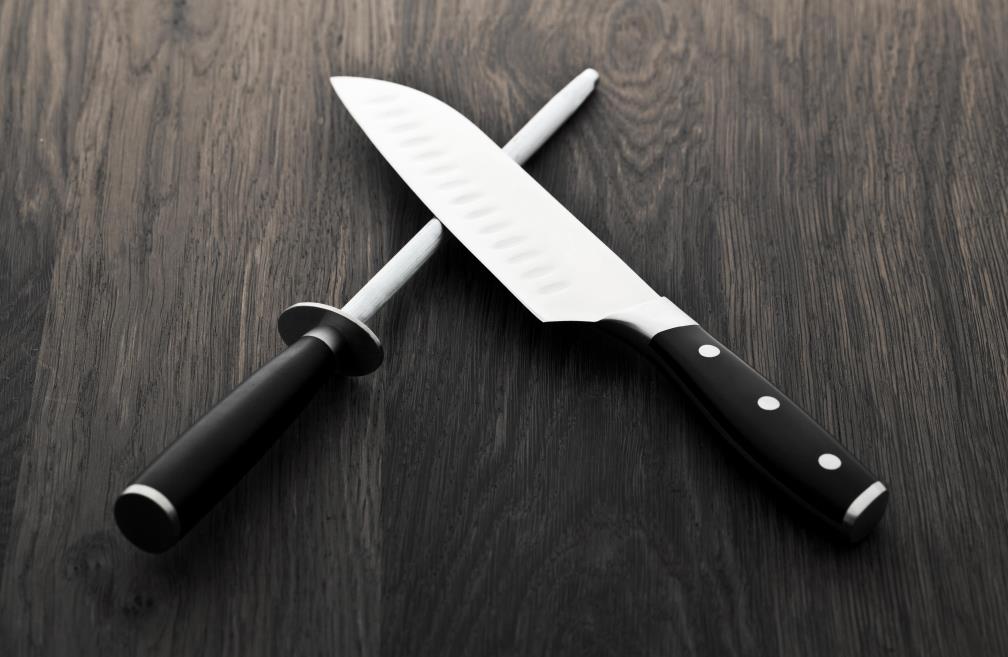
As you know by now, honing is not a sharpening process. It is a method to align a knife’s blade and prepare it for use. Here are the steps to take to hone a kitchen knife:
- Hold the kitchen knife in your dominant hand and the honing rod in your other hand. Make sure your fingers grip entirely in the handle section.
- Lift both the knife and honing rod in front of you and cross them so that they form an “X” shape.
- Align the center of the honing rod with the bottom of the knife’s edge. Push them together and make sure that your knife blade is angled correctly relative to the honing rod. This is usually around 20°.
- While maintaining pressure between the knife and honing rod, carefully slide the rod upwards along the knife edge. Once you complete one swipe, return the rod to its starting point and repeat. Do this several times on each side of the knife edge.
- At the start, it is better to slide slowly and consistently along the blade while keeping the correct angle. With practice, you can increase your speed.
Invest in proper knife storage
Even if you use your kitchen knives frequently, they will spend most of their lifetimes in storage. Therefore, it makes sense to keep your knives in a safe environment where they will not be damaged. Obviously, by placing them in a drawer, other items of cutlery may knock into the knives and damage the blades. There are better ways.
Magnetic knife rack
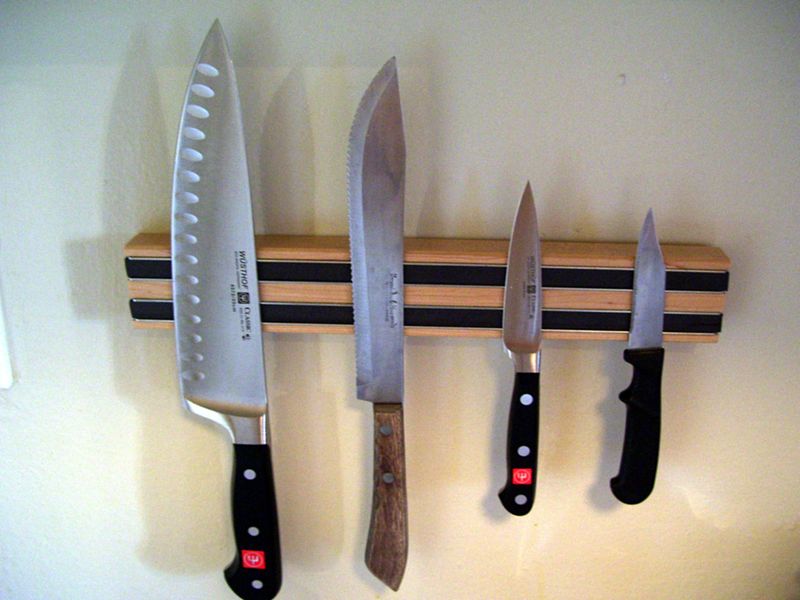
One of the most convenient ways to store knives in your kitchen is by installing a magnetic rack. These are typically wall-mounted racks that allow you to stick your blades on securely. The iron content in steel blades makes them magnetic and enables them to hang in this manner.
Knife racks are very efficient because they take up space on the wall that you would not normally use. They are also interesting features that give your kitchen a unique look. On the other hand, if your kitchen is very steamy, there is a possibility that your knives will rust if you store them openly on a rack.
Knife block
Knife blocks are common in many kitchens. They provide a neat station to store all your knives while you are not using them. They conceal the blades of your knives and only reveal the handles. This makes them very safe ― you are unlikely to cut yourself when taking a knife out (unlike with a drawer).
In the standard block design, knives hang vertically in narrow slots. These can be problematic because the small slots are very difficult to clean. Bacteria and dirt can build up inside the block over time and potentially contaminate your knives.
Knife blocks with horizontal slots are a better choice. In these blocks, your knives lie horizontally within the block. While still challenging to clean, horizontal knife blocks are more accessible so that you can clean the slots with a cloth. This is a more hygienic storage method for your knives.
Knife roll
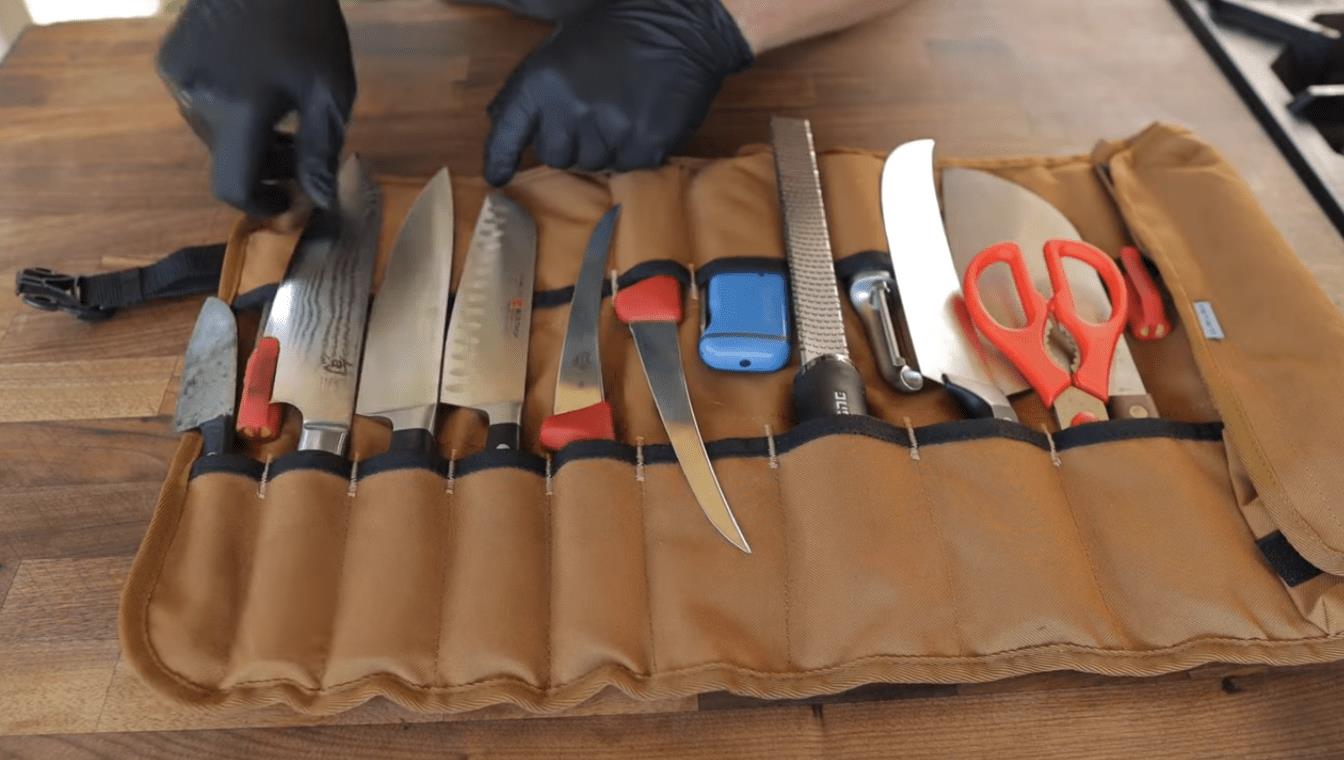
A knife roll is a very cost-effective and space-saving option to store your kitchen knife collection. It consists of a piece of material (mostly leather) with a series of pouches for your knives and honing rod. Once your knives are in place, you slowly roll the piece of leather into a cylinder with all the knives tightly packed inside. You can then seal the roll with the external belts.
Knife rolls often come with a handle, so they are easy to carry around. Because the knives are held securely in their pouches, they will not move and cause damage to one another. Knife rolls are hygienic too since you can clean them without much difficulty.
This design is not just useful for knives; similar bags exist for tools such as screwdrivers and spanners. They are convenient for mechanics and builders who need to take their tools to work. The same is true for chefs.
Knife protector
A knife protector is essentially a case or pouch for an individual knife. It can be made from leather, plastic, or metal, and serves to protect the knife’s blade, with the handle exposed. Naturally, this is a more expensive option because you need to buy a protector for every knife in your collection.
Unlike the previous three options, protectors do not keep your knives in one place. As a result, you have a greater chance of misplacing and losing one of your knives. However, protectors give you the freedom to store your knives in a drawer without any risk of blunting the blades.
Clean your knife with care
What you should not do
We already mentioned that you should avoid dishwashers when trying to maintain sharp blades. Conditions inside the machine can ruin the fine edge of a kitchen knife. The high water pressure and high temperatures can gradually soften the blade. The water spray will move the knife so that it collides with other pieces of cutlery. This movement may scratch the blade.
It is not wise to place used knives in the sink either. This unhygienic practice exposes the blades to potential damage from plates, pans, and other items.
What you should do
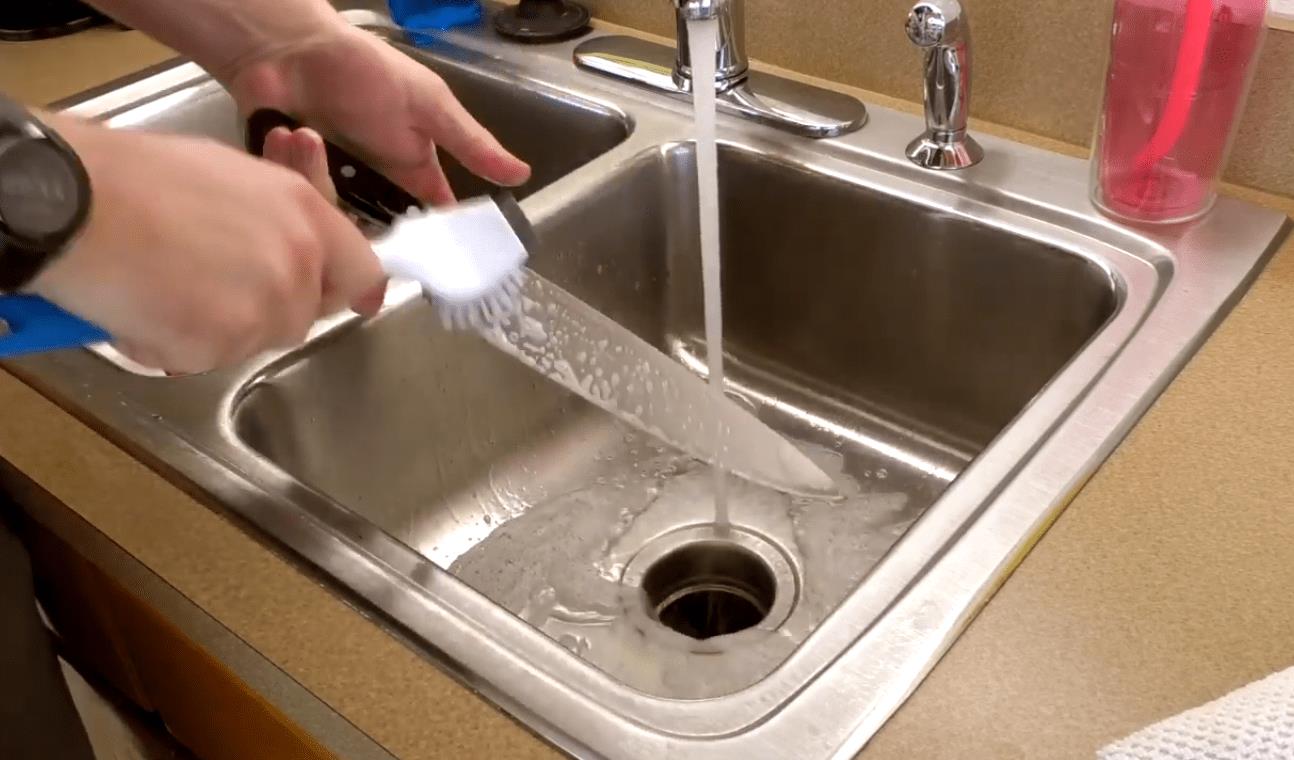
Ideally, you should wash your kitchen knives by hand immediately after use. To sterilize the knife, wash it in hot water with soap and a soft sponge. This is quick and safe because you can kill bacteria without damaging the metal. Unlike in a dishwasher, a brief wash with hot water from the tap will not harm the metal.
Once you have washed the knife, you need to protect it from corrosion. Stainless steel knives are more rust-resistant than high-carbon knives. Regardless, you should do all you can to prevent rust from forming. Rather than leaving the knives out to dry, carefully wipe off any moisture with a clean cloth.
It is particularly important to clean knives immediately if you use them to prepare different dishes. A knife that has cut raw meat must be completely disinfected before you can cut a cake with it.
What about carbon steel?
Some chefs like the benefits that carbon steel blades offer. However, they are more vulnerable to corrosion and degrading than stainless steel or ceramic blades. Carbon steel is especially sensitive to acidic foods like fruits and vegetables.
As with other knives, it is smart to clean them after every use and keep them as dry as you can. An extra precaution is to regularly protect your carbon steel blade with a layer of oil. Add a drop of vegetable or olive oil to the blade and spread it around both sides with a paper towel. Wipe away any excess with a clean paper towel.
Remember, you should never touch the edge of your kitchen knife with unprotected fingers.
My knife is dull, what now?
Even if you are very careful with your kitchen knife, cut with it on the right surface, clean it properly, and store it safely, its edge will wear down eventually. As we explained in the beginning, dull knives can be a hazard. A dull knife is also unpleasant to cook with, so it is best to sharpen it as soon as possible.
How to sharpen without a sharpener
Maybe you left your sharpening tool at home, or maybe you don’t wish to spend money on a sharpening device. In any case, there are simple and cheap alternatives to make your knife blade sharper:
Use a ceramic mug or plate
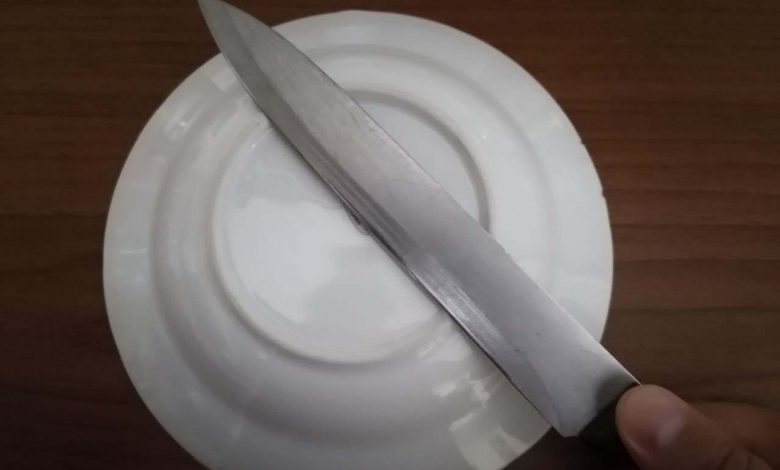
The first trick is to use the bottom of a ceramic mug or plate. The ring that the mug or plate rests on is harder than a metal blade and can act as a basic whetstone. Turn the mug or plate upside-down, and position your knife above the ring at the correct degree angle (around 20°).
Apply pressure and slide the blade along the edge of the ring (away from you or to your side). Do this several times on each side of the blade and wash the knife afterward.
Use the spine of another knife
Another trick is to use the spine of another knife. If the two knives are made from the same metal, they will have the same hardness, so it will be difficult to sharpen this way. Instead, you can hone blade edges, just like with a rod. Since you are using two knives, you have to take more care than with a honing rod, but the principle is the same.
Follow the same honing process described earlier with the dull knife in your dominant hand and the sharpening knife in the other. If your other knife is made from hard steel, it may sharpen your blade.
Use some sandpaper
The benefit of using sandpaper is that you can find rough and fine varieties, exactly like the surfaces of a whetstone. Tape a sheet of sandpaper to your table and slide the knife along the sandpaper at the right bevel angle (never towards yourself). Start with rough-grain sandpaper and finish with the finer grain.
When you have finished, any metal removed from the blade will be visible on the sandpaper. Wash your knife before using it again.
Your knife is only as good as your sharpener
The tricks we showed for sharpening knives cannot match the performance of a whetstone or sharpener. Whichever you choose, learn how to use it well. Sharpness is essential to a knife’s performance, so a sharpening tool is a necessary device for your kitchen.
How to sharpen with a whetstone (sharpening stone)
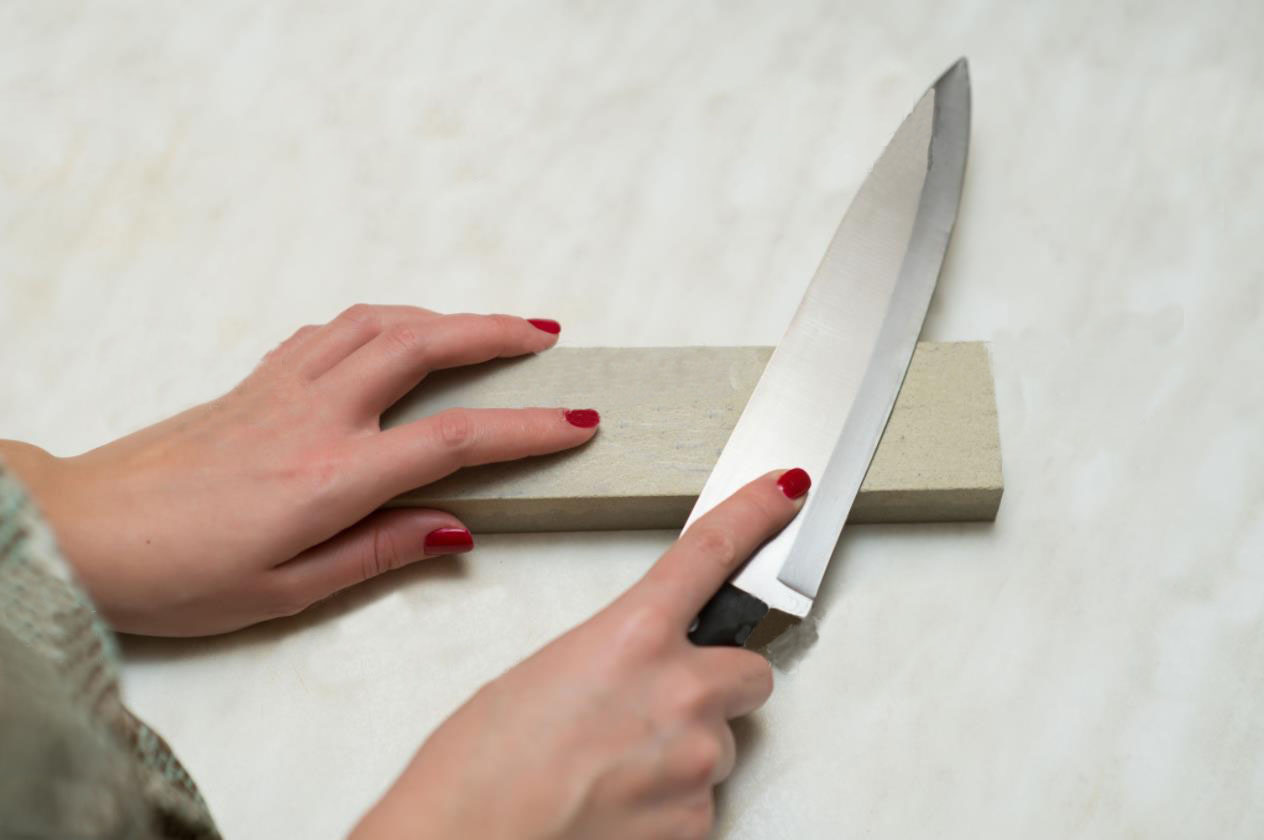
A whetstone is a traditional and manual sharpening tool. If your whetstone has two layers, start with the rough layer facing up. The rough surface will remove more material; the finer surface adds finishing touches. Align your knife on the edge of the whetstone at the correct bevel angle and slide the blade along. Never point the knife towards yourself while you do this.
Slide both sides of the edge along both grains of the whetstone several times. A whetstone allows for controlled sharpening so that you can refine the edge of your knife how you like it. Unfortunately, doing this can be tricky and time-consuming.
How to use a sharpener
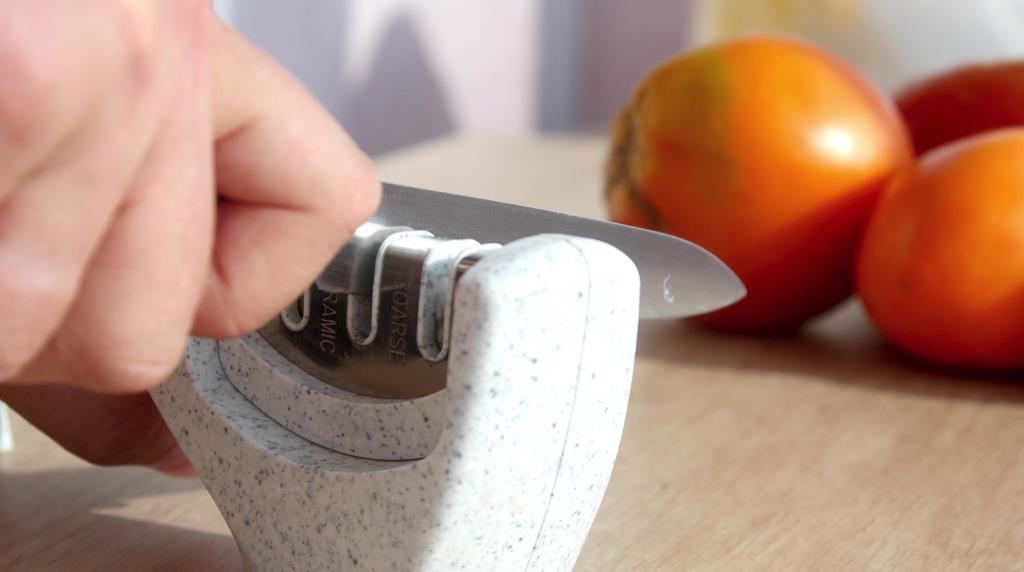
Knife sharpeners are small, convenient devices that simplify the sharpening process. The common design features a handle on one end, and 2-3 thin gaps on the other, each with a different grain. The gaps can contain diamond or ceramic materials. While gripping the handle, you simply insert your knife blade into one of the gaps and slide along.
As with the whetstone, start with the rougher grain and finish with the finer grain. In contrast to the whetstone, the gaps on a sharpener stabilize your knife so you do not have to worry about the angle. Sharpeners are usually manual, but sometimes electric.
Using a sharpener is faster and easier than a whetstone. Sharpeners tend to be cheaper too. However, you have more control while sharpening with a whetstone.
Takeaway
Keep a knife in its best shape, in other words, maintain its sharpness, is far more important than just buying the sharpest knife. With the aid of this guide, start showing your kitchen knives some love! Be sure to stop by out our store if you are looking for some quality high carbon hand forged knives.

